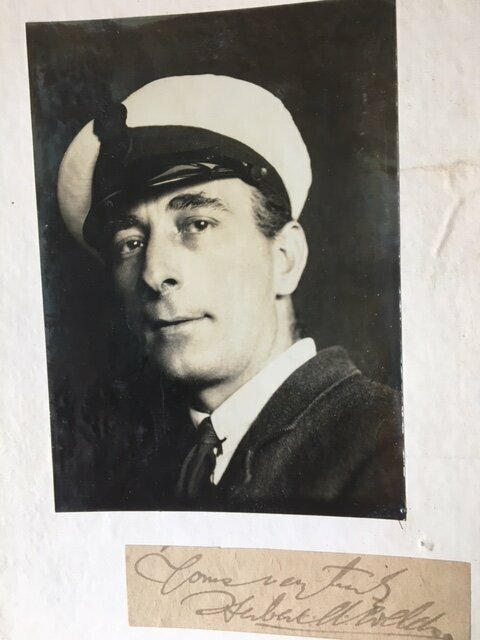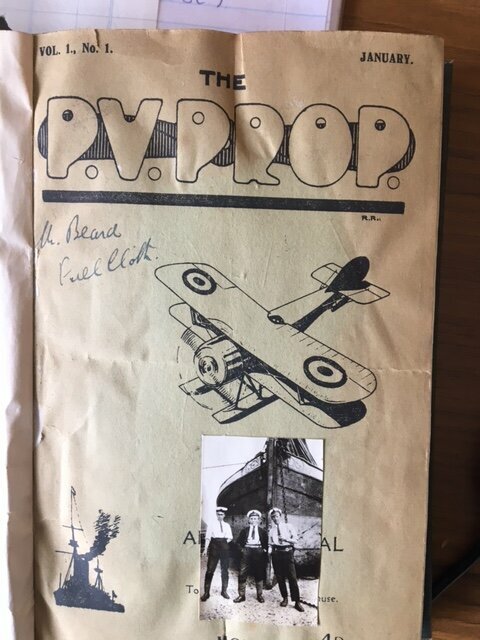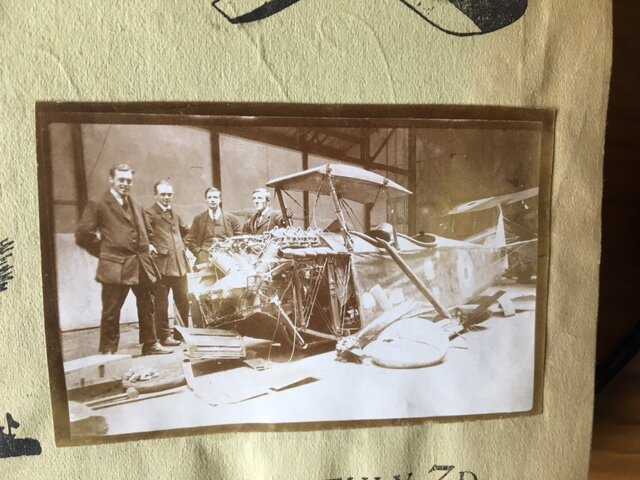P.V.7 Grain Kitten and P.V.8 Eastchurch Kitten
A fighter program for the Royal Navy's Arsenals
At the end of 1916, the Admiralty had acquired a certain experience in the use of landplanes from shipbased platforms, and therefore condisered operational use of lightweight fighters capable of taking off from small-size platforms fitted to the forward turret of its destroyers. The idea was to multiply the number of offshore aircraft capable of intercepting German dirigibles.
The Marine Experimental Aircraft Depot at Port Victoria, on Grain Island, et the experimental division of the Royal Naval Air Service at Eastchurch, were both commissioned to submit a prototype each. The two aircraft were to be powered by the same 45 hp geared ABC Gnat engine and fitted with a single 7.7 mm Lewis machine gun above the upper wing.
Designed by W.H. Sayers, the P.V.7 (serial N539) was developed at Port Victoria, on the banks of the Medway river. It was a small sesquiplane, with identical wing profile to the previous aircraft built there, having ailerons only on the upper plane. On March 1917, while the P.V.7 was still under construction at Port Victoria, Sqdn Cmdr Harry Busteed, who headed the experimental division at Eastchurch, was transfered to Grain Island to take the commandment of the Depot. He took with him G.H. Millar, the technical supervisor of the Eastchurch branch, and the partly completed prototype he had designed there.
Millar's prototype was an aircraft of classical lines but diminutive size, a biplane with staggered wings of equal length (the upper wing having marked dihedral), separated by deep masts on either side. The aircraft was equipped with ailerons on both planes, and the airframe was strengthened by wires connecting the upper plane with the wheeltrain's axle. The horizontal tail was a single mobile surface that was aerodynamically compensated.
The prototype was completed on the Medway's banks under the designation P.V.8 (serial N540) and was christened the Eastchurch Kitten, while the P.V.7 became the Grain Kitten. The P.V.7 made its first flight on June 22, 1917, with an ungeared 35 hp ABC Gnat engine, since the planned engine was not available. As it was not very maneuverable in flight and on the ground, and because of its unpredictable engine, the P.V.7 was initially confined to flights in the immediate vicinity of the airfield. As to the P.V.8, it first flew on September 1917, also powered by the same ungeared 35 hp Gnat engine as its competitor.
From the onset, the P.V.8 proved superior to the P.V.7, which confirmed, not only the bad choice made in the profile, but also that the sesquiplane formula of the P.V.7 was not adapted to aircraft with small engine power. A new wing with conventional profile was therefore built for the P.V.7. The empennage and landing gear were also modified to take into account the results obtained during the first test flights. Eventually, however, it was decided not to fly the modified aircraft because of the engine's recurring troubles. The P.V.7 was therefore never tested in its new configuration.
Despite its qualities, the P.V.8 suffered from a lack of stability. It was therefore fitted with a fixed stabilizer and new elevator control before its second flight on September 26. In this new configuration, it was now judged highly superior to the P.V.7. Not only it offered the pilot great visibility, but it was also quite maneuverable. Still, it seemed to fragile for extensive military work, and was particularly handicapped by its feeble, whimsical engine.
The P.V.8 was briefly evaluated at the Martlesham Heath test facilities between October 19 and November 9, 1917. However, the Admiralty abandoned the program and decided on a carrier-based version of the Sopwith Camel. Moreover, the Zeppelin airships had made way for the large Gotha or Zeppelin-Staaken bombers, for which the tiny Kitten would have been no match.
On March 13, it was decided to crate the P.V.8 and ship it to the United States for evaluation. It was probably planned to be compared with Captain James V. Martin's K.III of similar configuration. However, all trace of the P.V.8 was lost after March 30, and there is no indication that it ever reached America.
Translated/adapted by Stéphane Beaumort from Les chasseurs de poche de Grain Island, by Jean-Louis Bléneau



















